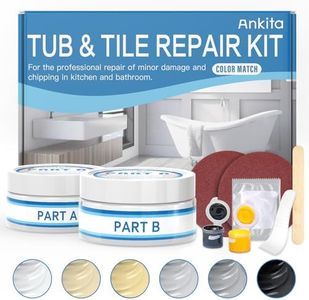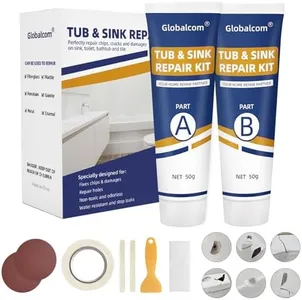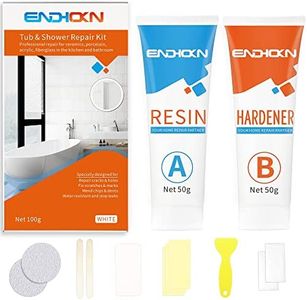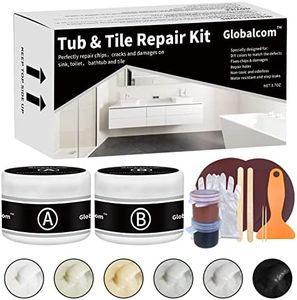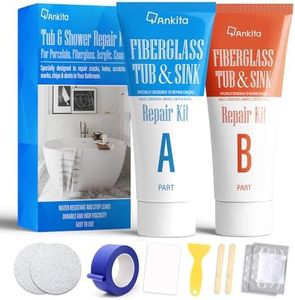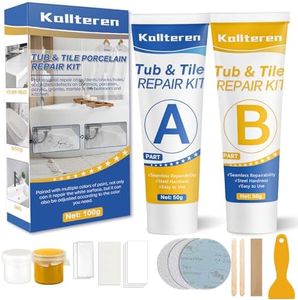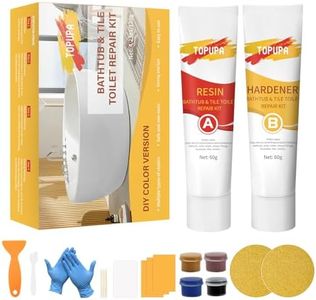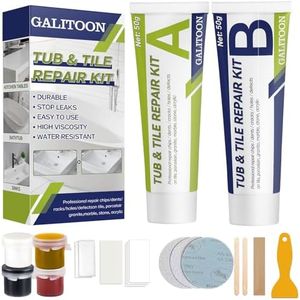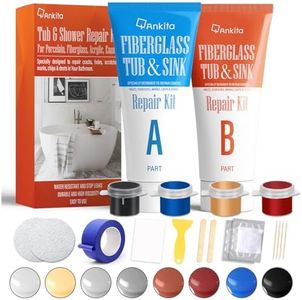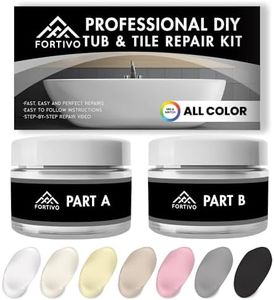We Use CookiesWe use cookies to enhance the security, performance,
functionality and for analytical and promotional activities. By continuing to browse this site you
are agreeing to our privacy policy
10 Best Bathtub Crack Repair Kits
From leading brands and best sellers available on the web.Buying Guide for the Best Bathtub Crack Repair Kits
When selecting a bathtub crack repair kit, it’s important to focus on usability and the durability of the finished repair. You want a kit that will not only fix the visible problem but will also keep your bathtub watertight and looking good for a long time. Different baths (such as acrylic, fiberglass, or enamel) may need different types of kits, and considering ease of application and finish quality is important if you’re planning to do the repair yourself.Compatibility with MaterialThis specification tells you if the kit is suitable for your bathtub's material, such as acrylic, fiberglass, porcelain, or enamel. It’s important because some repair compounds only bond effectively with certain materials—using the wrong type can lead to poor adhesion and the crack reopening. When checking this, sort kits by their listed compatible materials, and pick one that matches your bath’s surface. If you’re not sure about your bathtub’s material, try to find out before buying so the repair is durable and blends in.
Type of Filler/CompoundThe filler or compound in the kit is the main substance that fills and seals the crack. The kinds of fillers include epoxy, acrylic resins, and polyester resins. Epoxy provides a very strong and waterproof seal, ideal for significant cracks; acrylic is easier to smooth out and gives a cleaner look but may be less durable for big repairs; polyester is quick to set and often used for fiberglass. Consider the size and depth of your crack: big cracks or constant water exposure might do better with epoxy, while small chips may be fine with acrylic-based kits.
Curing TimeCuring time is how long the repaired area needs before the bathtub can be used again. Some kits set and cure in just a few hours, while others might need a full day or more. This is important if you need the bathtub available quickly. Kits with faster curing times are convenient for smaller, less critical repairs, but for deep cracks, a longer curing time might provide a stronger finish. If you have extra time or can avoid using the bathtub, going for a slower-setting product may yield a more permanent fix.
Finish Quality and Color MatchingA quality repair kit should blend in with your bathtub, making the repaired area less noticeable. Finish quality indicates how smooth and polished the repair will look after it’s done, and some kits offer colorants or come in different shades. This matters if the crack is in a visible spot and you want an invisible repair. Check if the kit allows you to match your bathtub's color (like white, almond, or biscuit), and if appearance is very important to you, prioritize kits with customizable colors and a high-gloss finish.
Ease of ApplicationThis refers to how straightforward the kit is for a non-professional to use. Some kits require careful mixing and applying, possibly with sanding and buffing, while others are more simple, with one-step applicators. If you have no experience with home repairs, look for kits labeled as easy or beginner-friendly, possibly with instructional videos or tools included. More involved kits may provide a better result, but ease of use is key if you’re new to DIY repairs.
Waterproofing and Long-term DurabilityThis specification shows how well the repair will block water and resist further cracking over time. A good kit forms a watertight seal that won’t break down with cleaning or extended use. When comparing kits, look for features like maximum water resistance and claims of long-term durability. For bathtubs that get daily use or are often filled, selecting a kit known for strong, lasting results will prevent you from needing to repair again soon.
